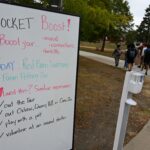The Learning Network (LNM) stands as a testament to the power of collaboration in advancing higher education. Originating from Minnesota legislation enacted in 1993, the LNM was designed to foster “regional linkage” and “regional coordination” among higher education institutions through dedicated grants. This pioneering initiative, while initially capped at 90% state funding, laid the groundwork for a robust and enduring educational infrastructure.
Organizational Structure of The Learning Network
At its core, the LNM operates through a model of six geographically distinct regional consortia. This structure is intentionally designed to maximize economies of scale, ensure equitable access to resources, and actively involve users in shaping both planning and operational outcomes. These consortia are inclusive, bringing together all institutions within the University of Minnesota system and Minnesota State system. Collectively, this encompasses approximately 60 campuses and higher education centers spread across the state, all interconnected through The Learning Network. Each consortium is governed by a board composed of representatives from its member institutions, ensuring that regional needs and perspectives are directly addressed. This innovative regional consortium model is key to the LNM’s ability to effectively cater to the diverse and specific service requirements of different areas within the state.
Providing overarching governance and accountability at the state level is the LNM Board of Directors. This board mirrors the regional structure, with representation from each of the six regions as well as from the University of Minnesota and Minnesota State systems. A crucial function of this board is to facilitate seamless coordination and cooperation between the regions. This inter-regional collaboration is vital for optimizing efficiencies and ensuring that access to LNM services is widespread and consistent across the entire network.
The physical and digital backbone of The Learning Network is a sophisticated telecommunications infrastructure. This network is expertly managed by the Office of Enterprise Technology, in close collaboration with both higher education systems and the six regional consortia. This collaborative management approach ensures seamless integration with a multitude of critical networks, including the Internet, the State of Minnesota’s MNET network, and specialized networks serving healthcare, K-12 education, and public libraries. Furthermore, The Learning Network extends its reach globally through interconnections with high-performance networks like Internet2 and the National LambdaRail, positioning Minnesota’s higher education institutions within a broader national and international research and education landscape.
The Fiscal Model and Collaborative Benefits of The Learning Network
The financial sustainability of The Learning Network is ensured through a blended funding model. It relies on legislative appropriations channeled through Minnesota State, combined with a crucial commitment from member institutions within each regional consortium to contribute at least 10% of the operational costs. The allocation of LNM funds to the regional consortia is guided by the LNM Board, ensuring strategic and needs-based distribution. These funds are then strategically deployed by each consortium to support essential coordination activities, maintain core network services, and provide vital application support to member institutions.
The operational philosophy of The Learning Network is built upon several key pillars that deliver significant advantages to its participants:
-
Collaboration and Partnerships: At its heart, The Learning Network thrives on collaboration. This extends from partnerships within individual regions to cooperation between regions, and crucially, to the strong partnerships among primary stakeholders: the University of Minnesota, Minnesota State, and the Office of Enterprise Technology (OTE). This collaborative ethos is fundamental to the LNM’s success.
-
Cost Savings through Shared Infrastructure: The collaborative model and the shared infrastructure inherent in The Learning Network yield substantial cost savings. By pooling resources and operating at scale, the LNM achieves significant efficiencies. It is estimated that every dollar invested in The Learning Network generates approximately two dollars’ worth of service when compared to individual institutions independently providing the same services. This demonstrates a remarkable return on investment and efficient use of public funds.
-
Customer-Centric Service Delivery: The regional organizational structure of The Learning Network ensures a strong connection to the individual colleges and universities it serves. This regional approach allows member institutions to retain significant influence over support levels, resource allocation, and the specific services provided. This customer-centric model ensures that the LNM remains responsive and adaptable to the evolving needs of its diverse membership.
-
Provision of Core Network Services: The Learning Network delivers essential network connectivity that is foundational to the operations of modern colleges and universities. Critically, the LNM provides all member institutions with access to distance learning technologies. This capability is paramount in enabling these institutions to expand their reach and enhance the distance learning opportunities they offer to students, making education more accessible and flexible.
In conclusion, The Learning Network stands as a model of effective collaboration and resource optimization in higher education. By fostering partnerships, leveraging economies of scale, and prioritizing the needs of its member institutions, the LNM delivers essential services and drives significant value, ensuring that Minnesota’s higher education landscape remains connected, innovative, and accessible.
